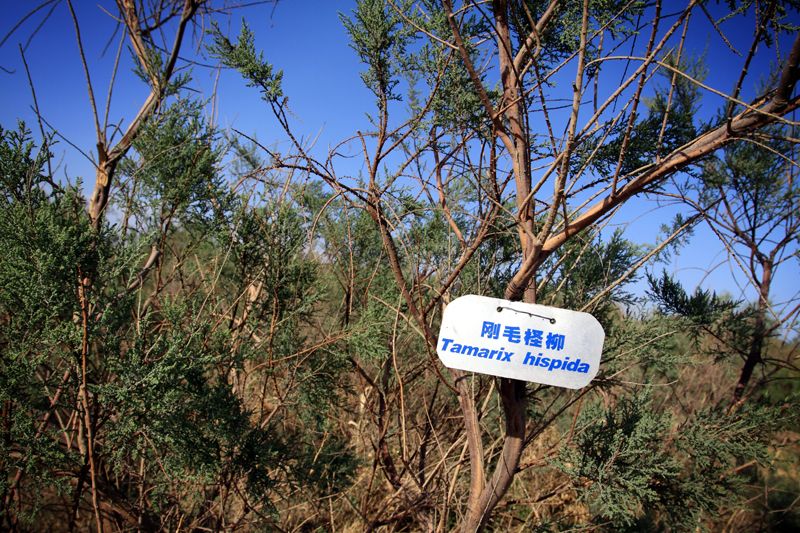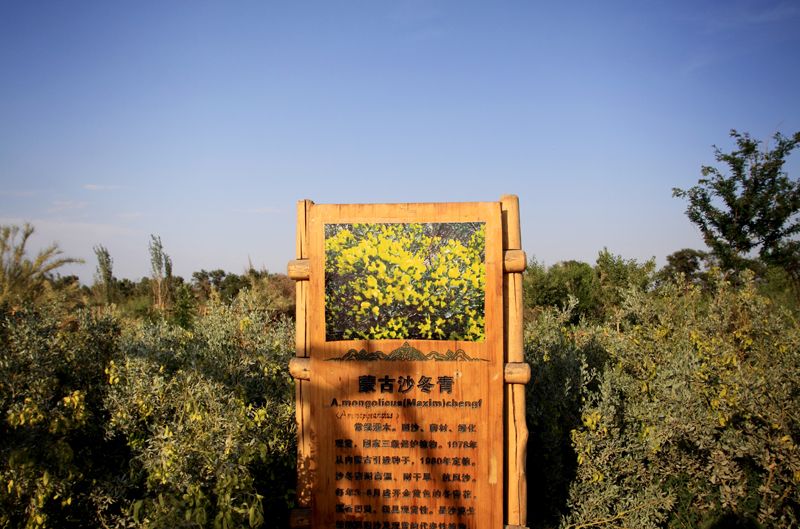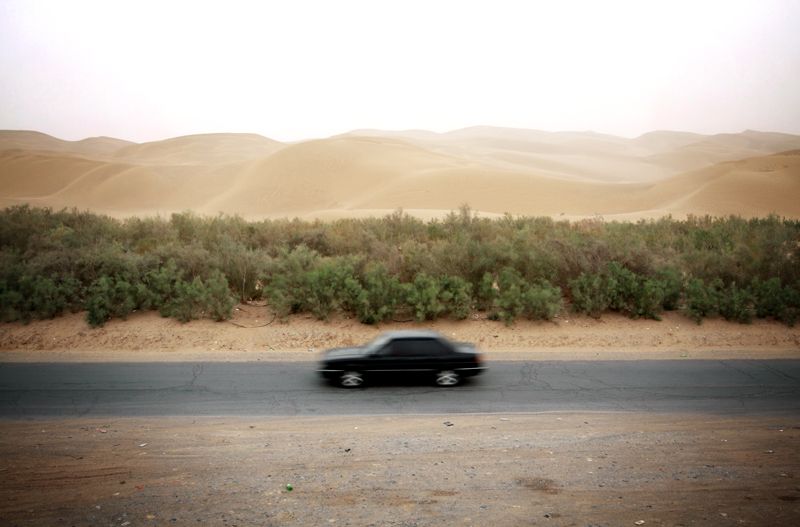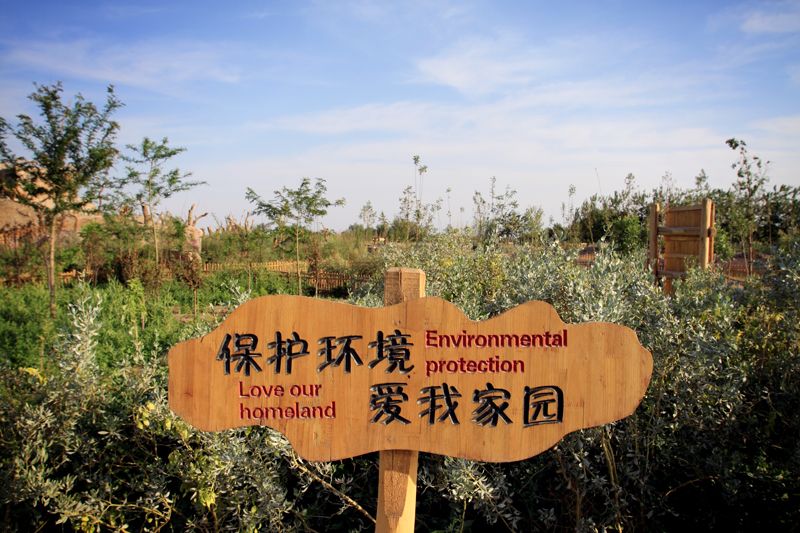The cool spring winds are blowing in the northern-central regions of Xinjiang province in mid-May. Winding their way through the leafy roads of this legendary oasis town, they provide a cooling respite from the slowly increasing temperatures which climb to nearly 50 degrees centigrade in the summer months, earning the region the name of the 'Land of Fire'. Like many towns in this region, Turpan is surrounded on all sides by dry and hostile expanses of arid land, however nestling in this oasis, is one of China's leading centres into research aimed at fighting the expanding sands.
Lying in the second lowest depression in the world, at 154 metres below sea level, the Turpan desert botanical garden is China's largest and is at the centre of the race to research and study the effects of desertification and how it can be stopped. By growing and cultivating sand-fixing plants, the researchers of the Chinese Academy of Social Sciences are attempting to find ways in which productivity can be restored to arid land and investigate the success of plants to stop moving deserts in their tracks.
The park contains 80% of the country's desert plants with over 300 species in total. As visitors take a stroll through the park they are able to see that each species has its own role to play it the fight against the deserts. The indistinct Tamarix hispida for example, is a deciduous shrub that could easily be missed for its unremarkable appearance. This species however is perfectly suited to life it the deserts as it is able to grow in very alkaline and saline soils and is even unable to grow in the shade. A wonderfully adapted species for the desert.
The Ammopiptanthus mongolicus catches the eye, with is butter-yellow flowers. This plant is quite remarkarkable in that it has been dubbed a 'living fossil', as it is an ancient relic from the Tertiary Period, from over 2 million years ago. It is now an endangered species and is listed as one of the 'primary protection plants' by the Chinese government due to its rarity and value for studying factors such as water-stress and genetic-adaptations for desert environments.
Applications of the research being conducted at the Turpan botanical garden and at the other gardens under the control of the Chinese Academy of Social Sciences, can be readily seen if you spend time travelling the desert regions of China. One of the clearest, and most ambitious, of these was the lining of the entire 500km length of Tarim-desert highway, in an attempt to protect the vital oil-carrying trucks from the hazards of the spreading sands.
As China's deserts continue to move, the economic costs of desertification continue to spiral out of control. According to Tang Yuan, a director at the State Council Research Center, in a statement made in 2008, the direct economic loss from desertification has reached 54 billion Chinese yuan ($8 billion US approx.) each year. This alarming figure has fuelled the increase into research in ways to stop the moving sands.
The importance of the the Turpan desert botanical garden, and others like it around the country, is unquestionable. It is through studying, researching and ultimately applying, sand-fixing and soil-stabilsing plants, which will help to protect the vast swathes of land that are being attacked and taken over. The task is huge, but it is through science and education that China can find ways to fight back against its growing sands.









